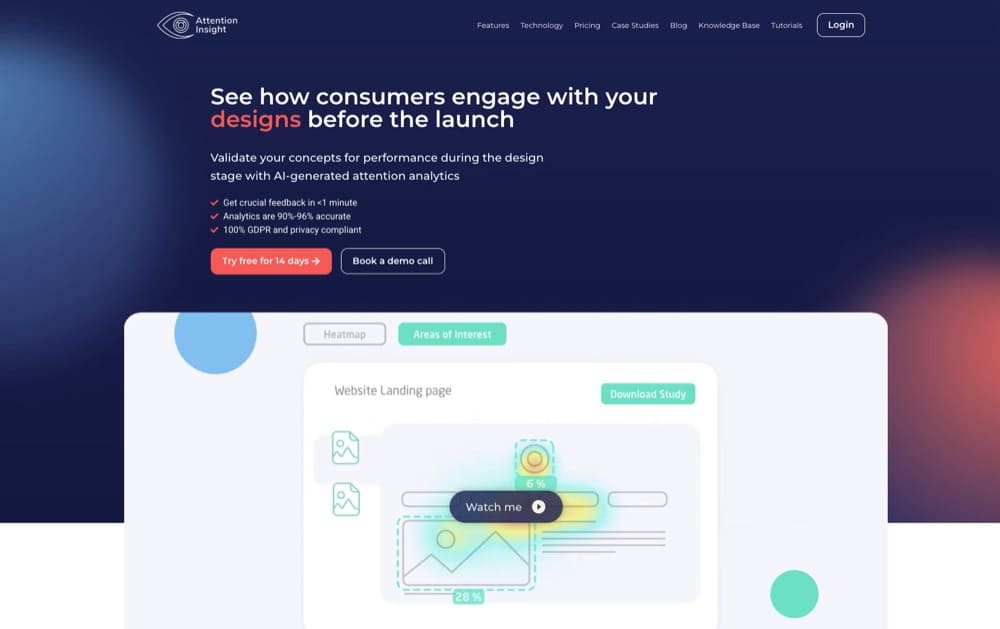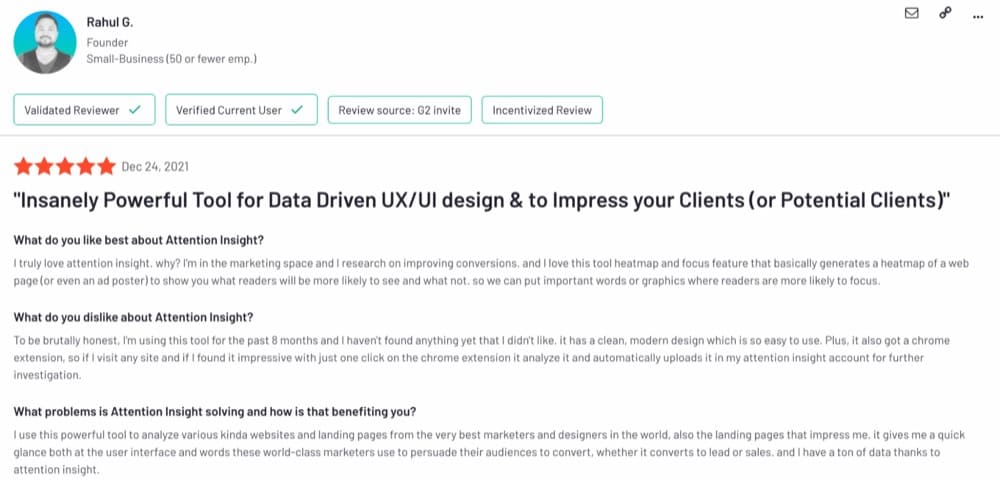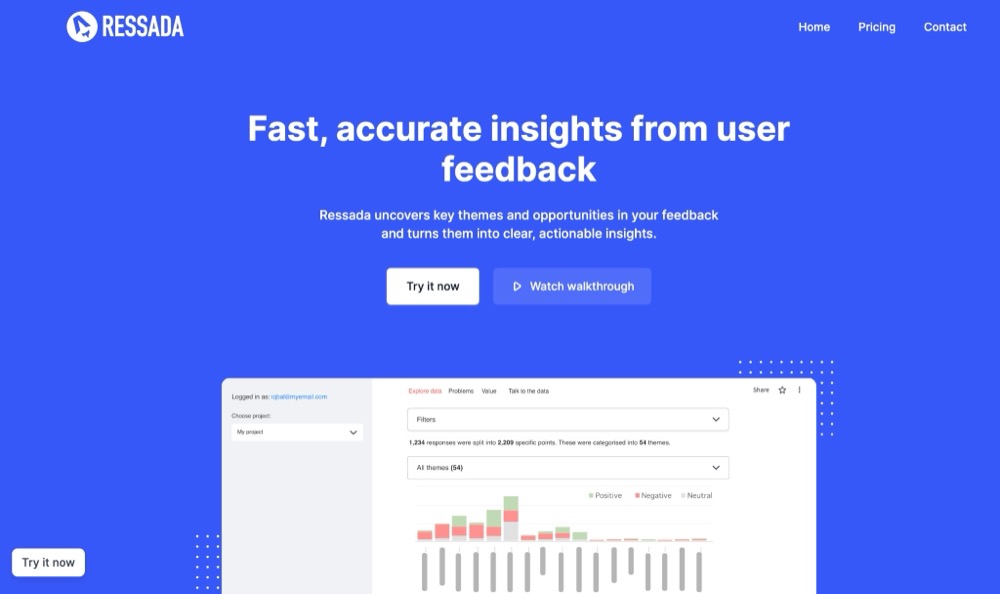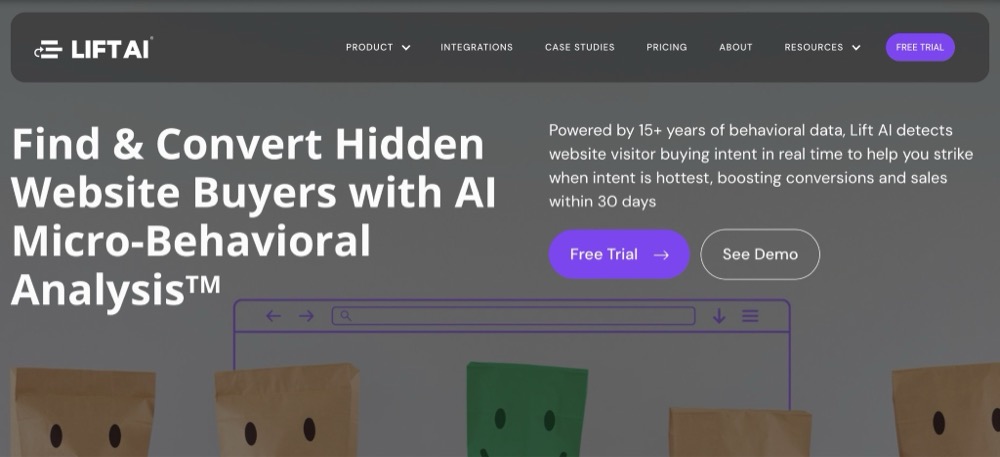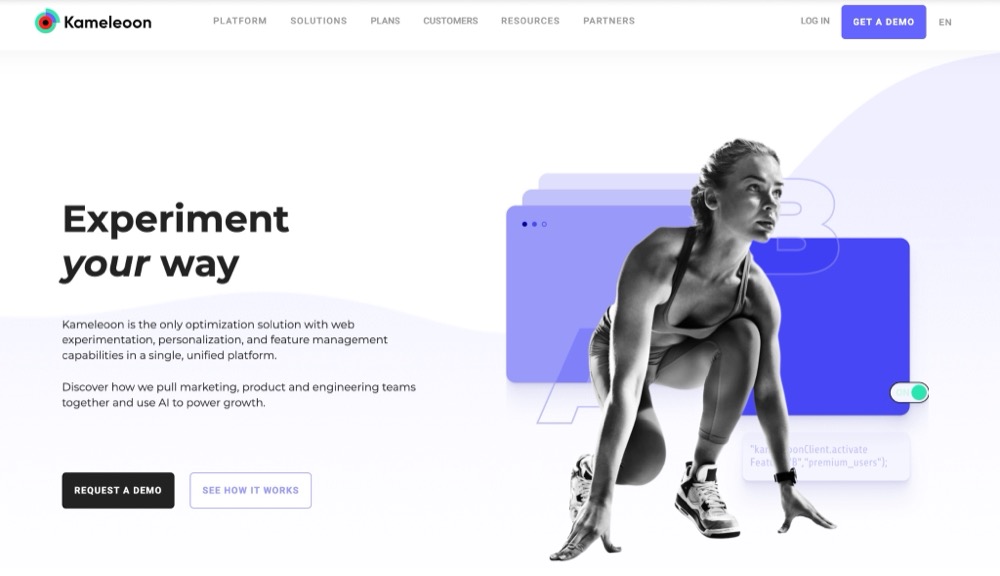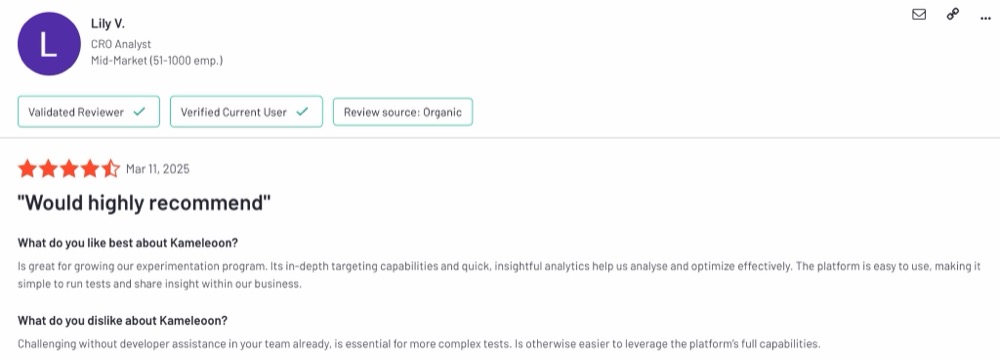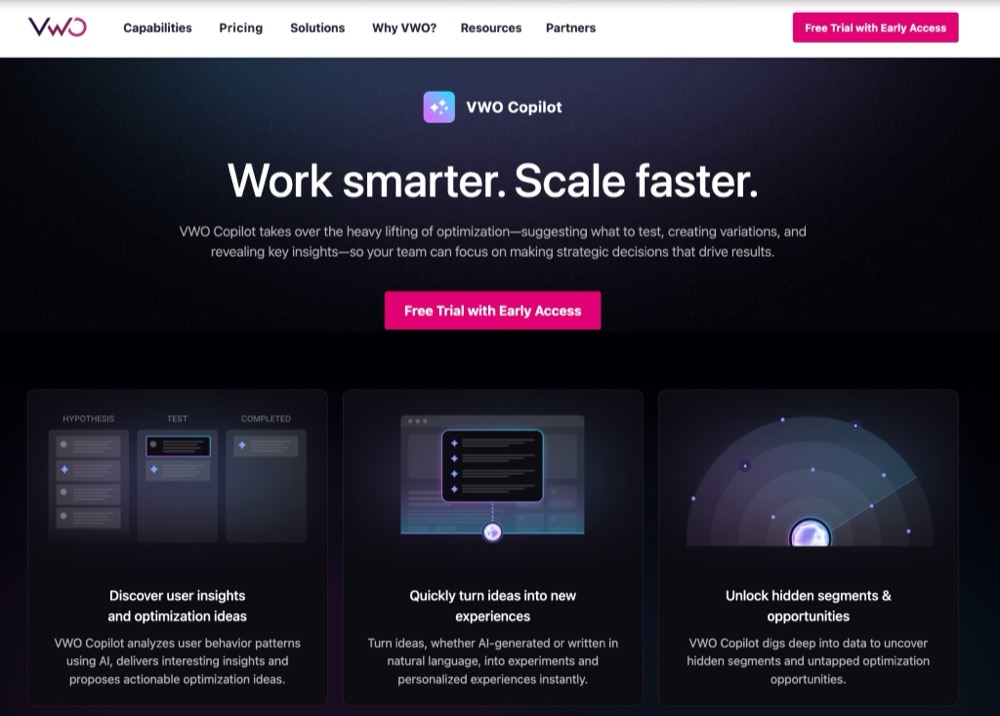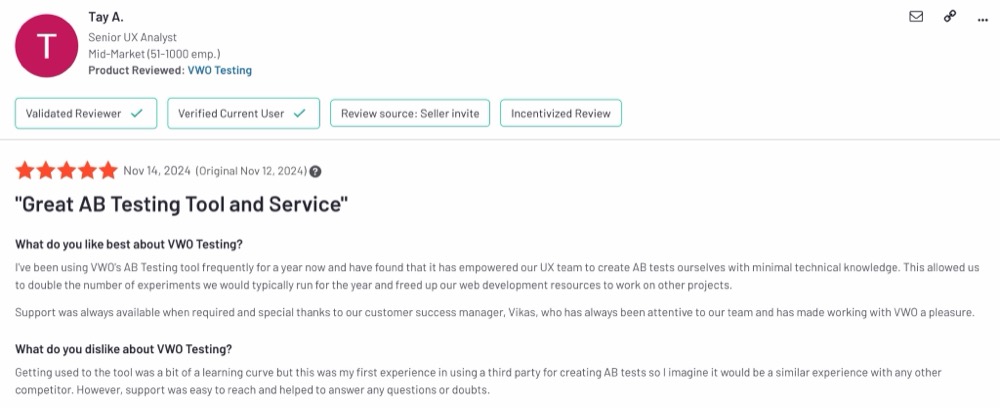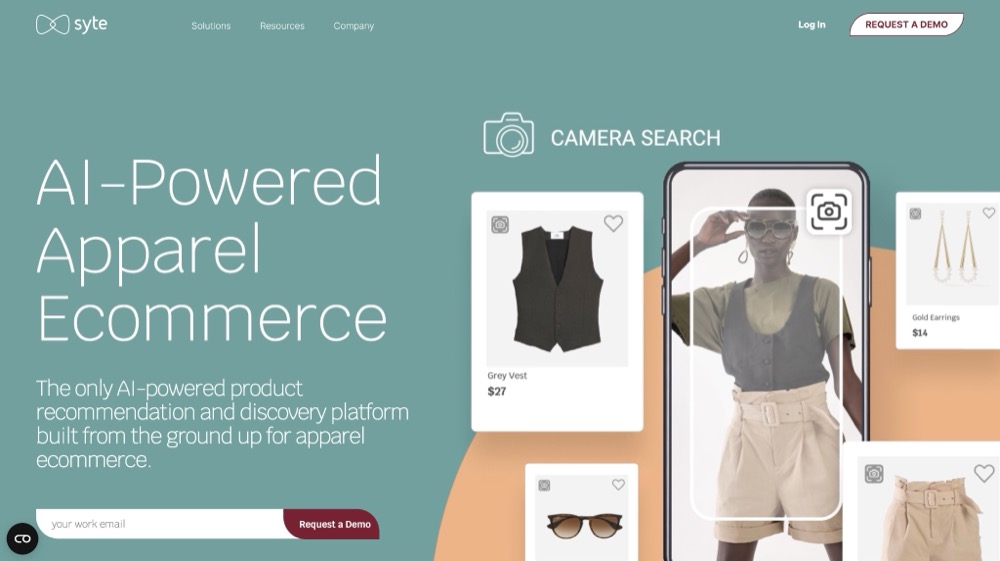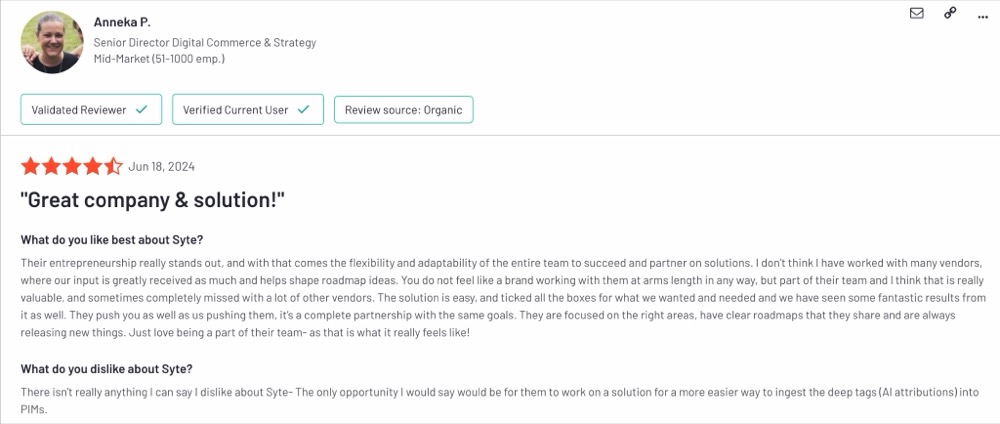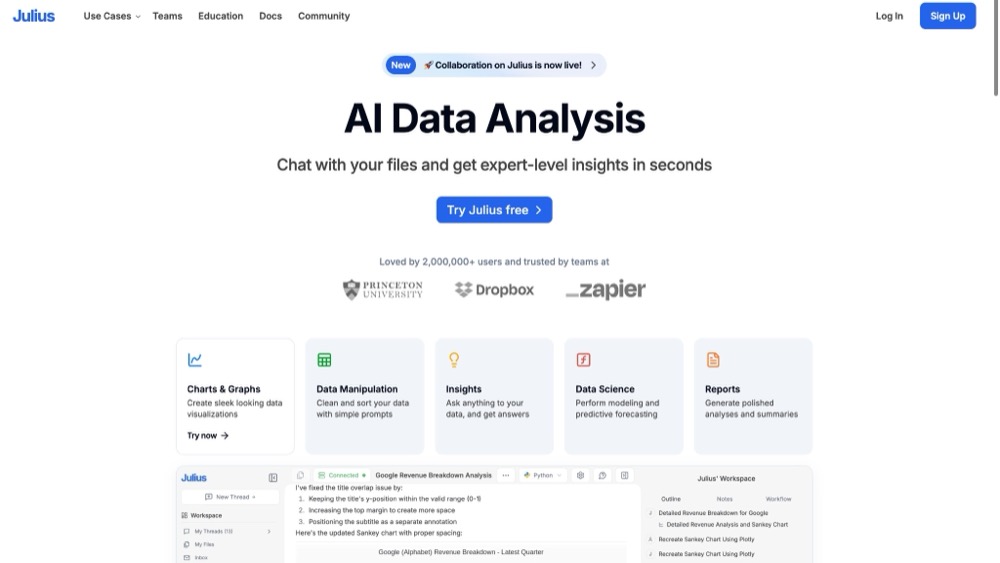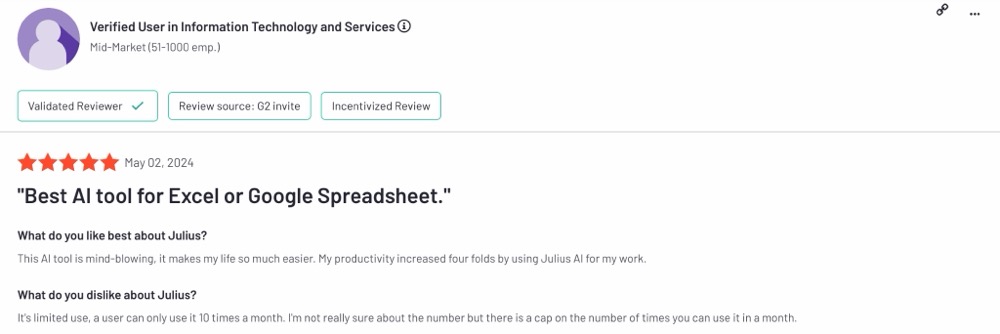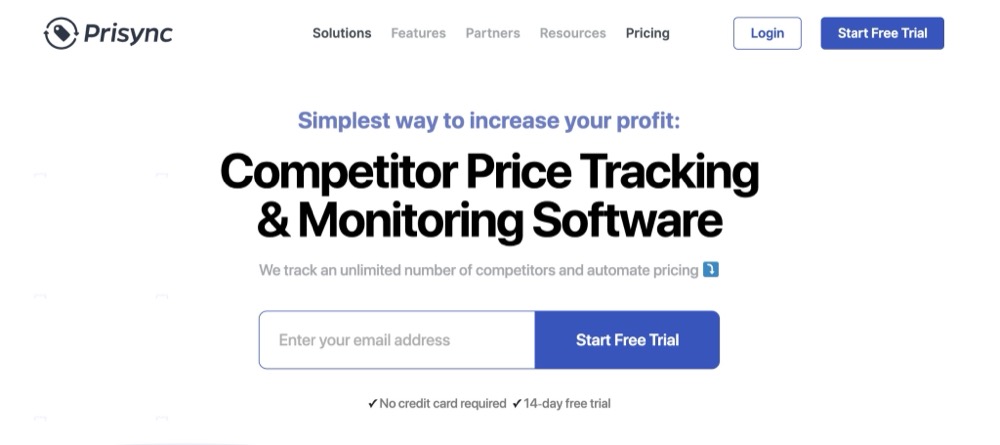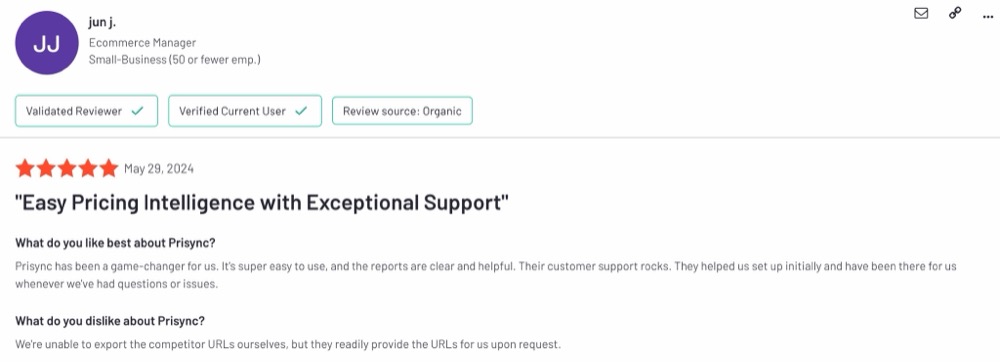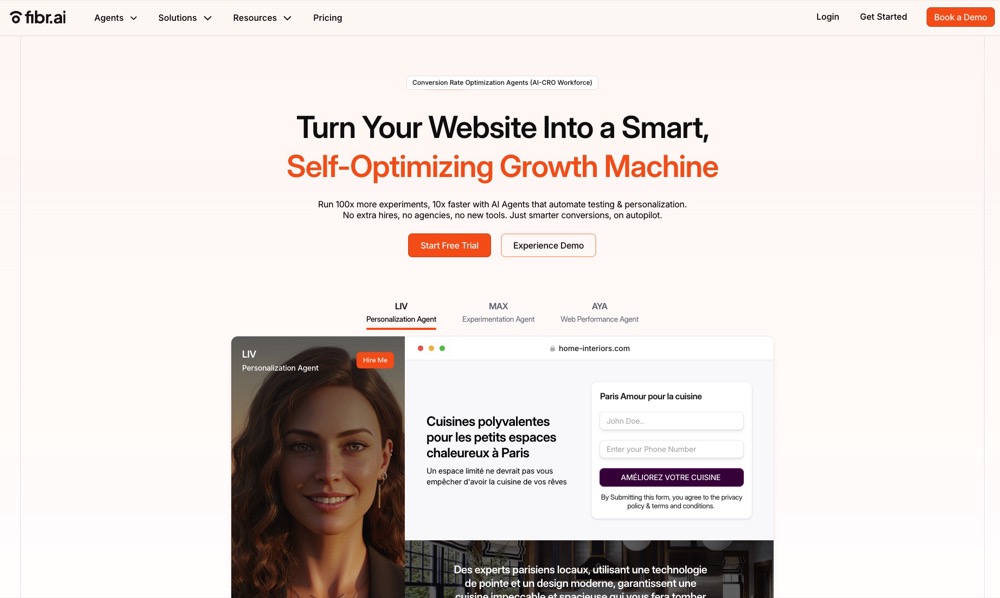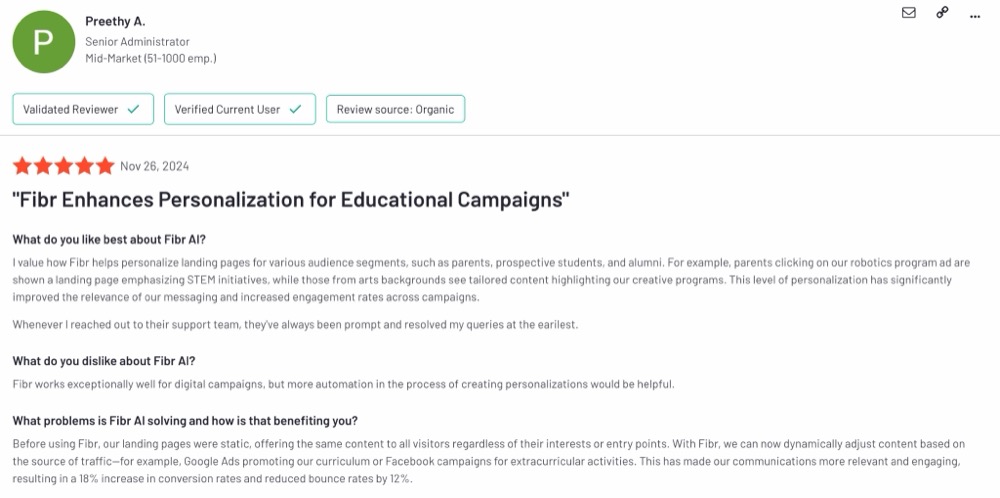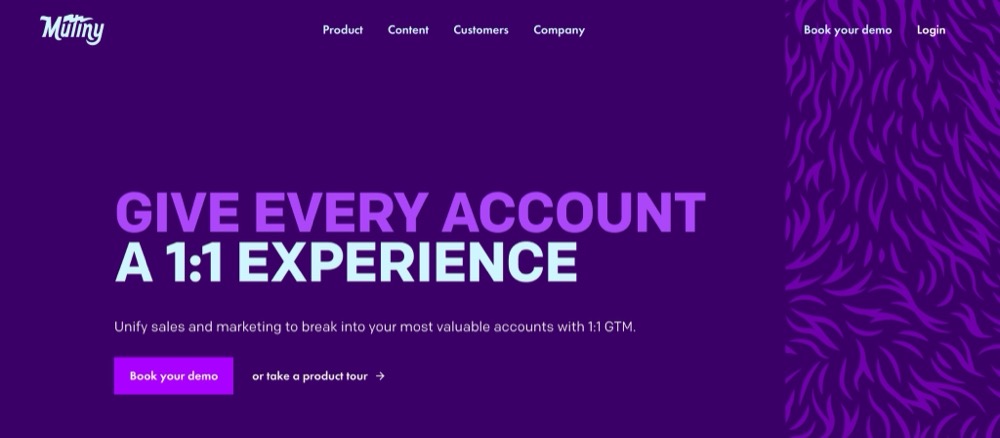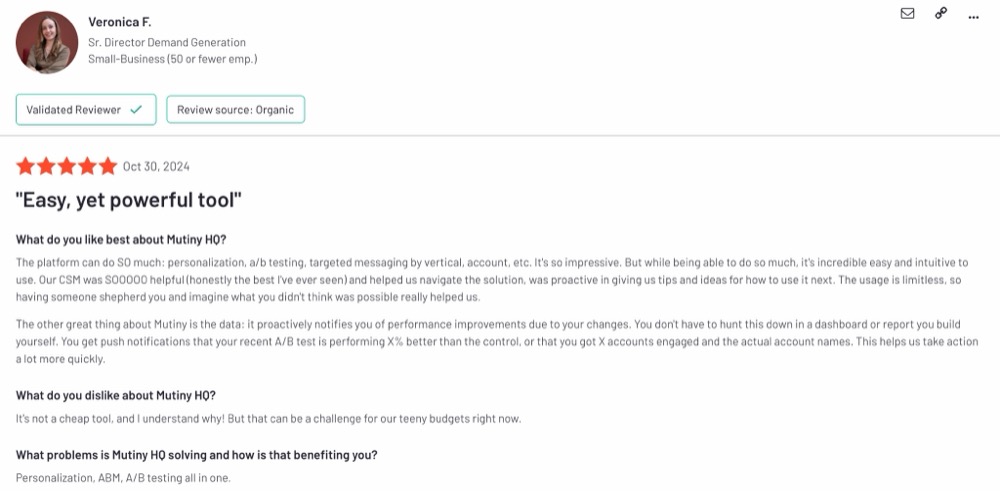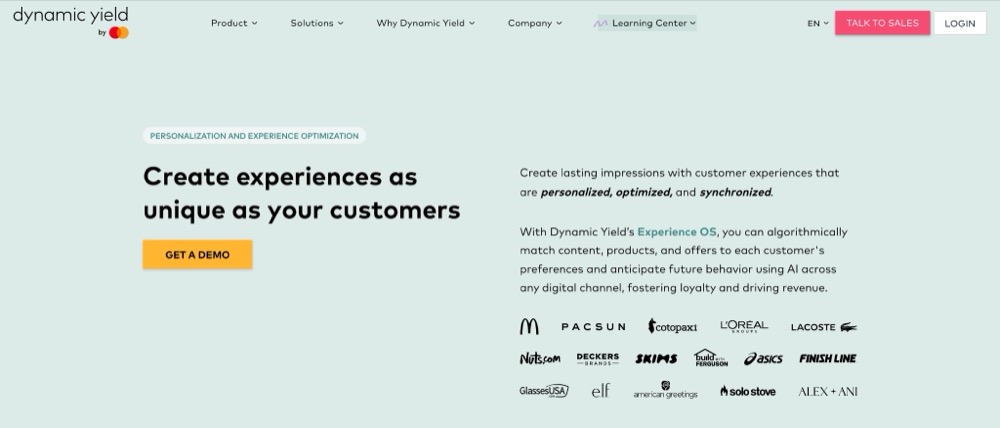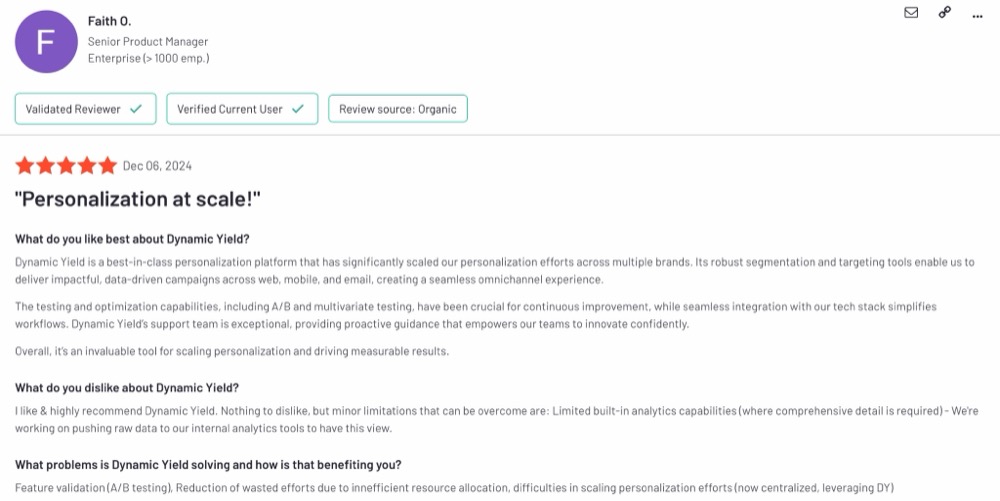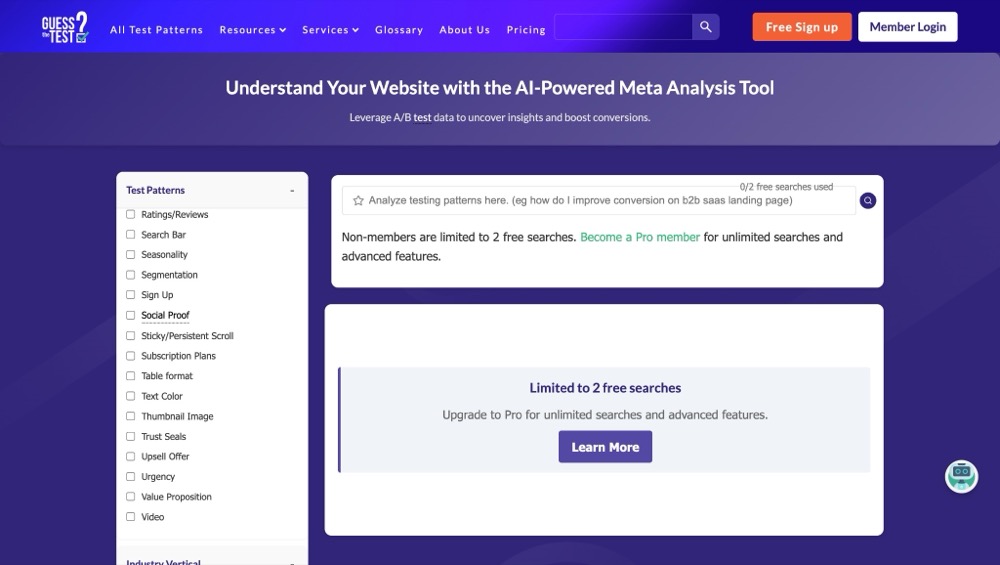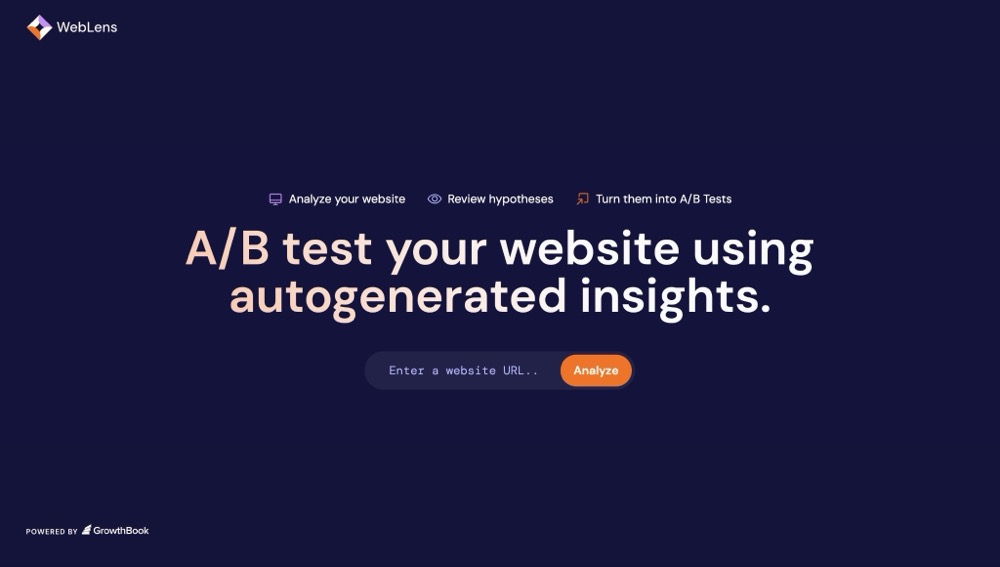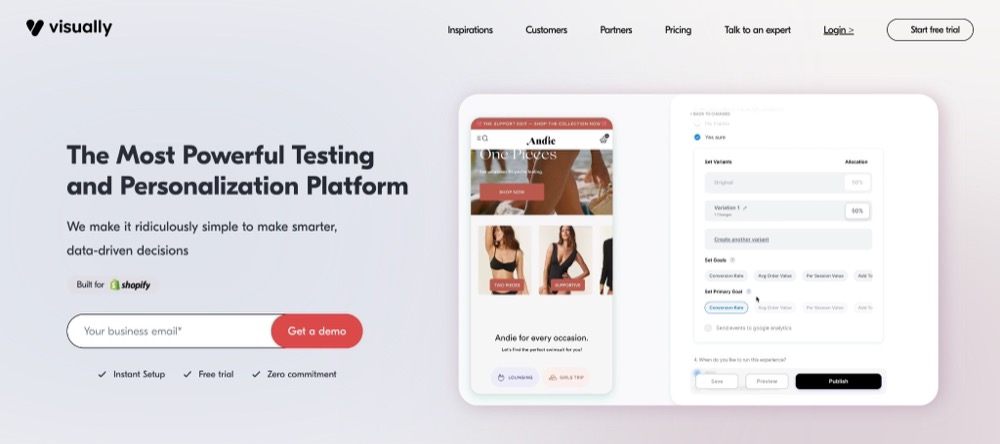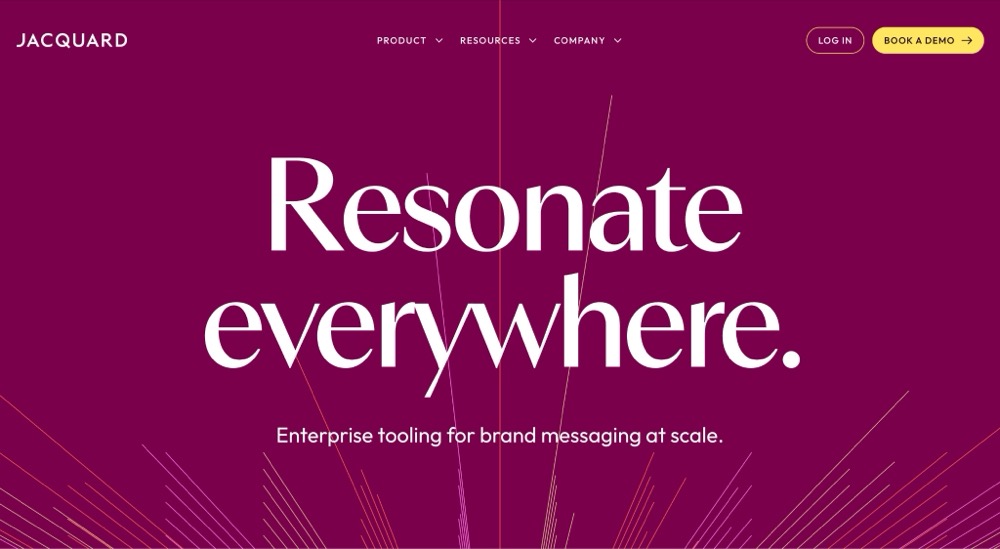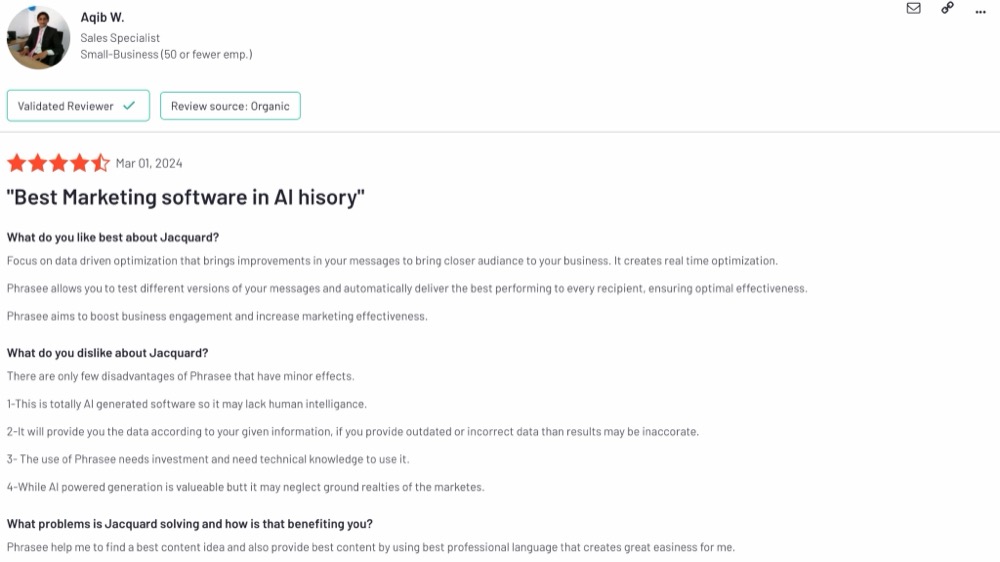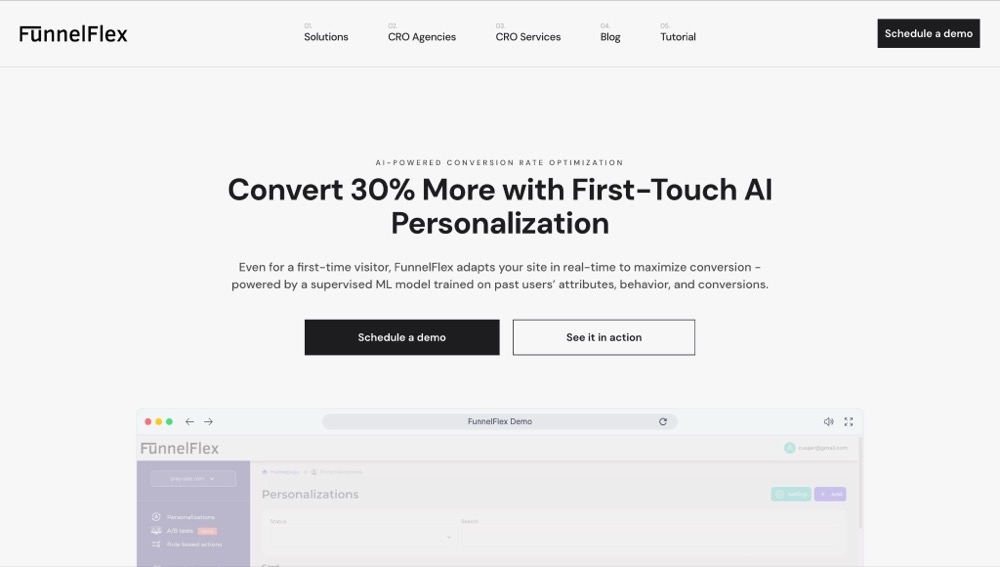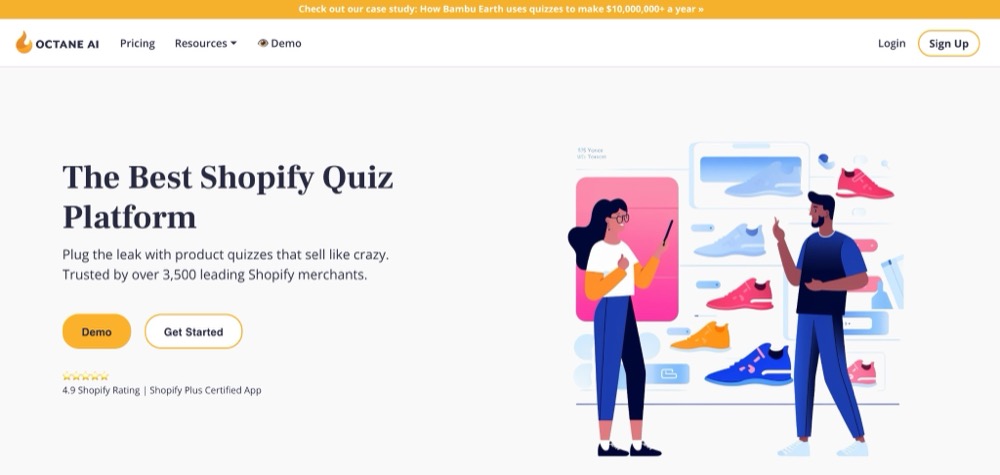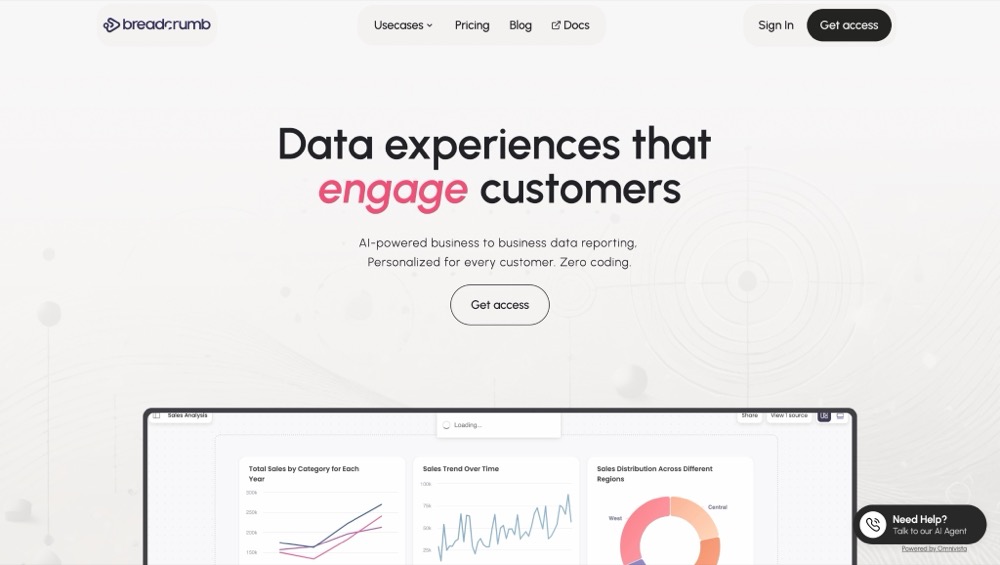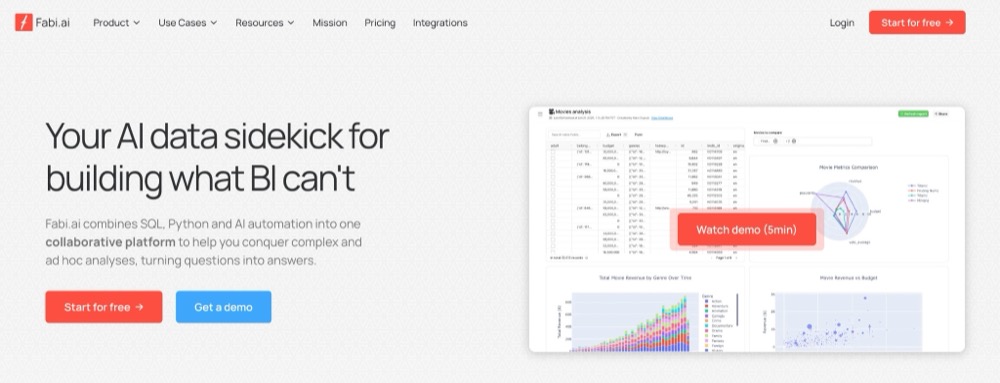AI Tools You Can Effortlessly Fold Into Your CRO Workflow (And Wonder How You Worked Without)
If you’re serious about Conversion Rate Optimization, you already know the biggest bottlenecks: slow test cycles, messy data, and guessing what will actually move the needle. That’s where AI can be a game-changer.
In this article, we’ve handpicked 20 AI-native tools built to tackle specific CRO challenges, whether it’s generating hypotheses, designing tests faster, personalizing user experiences, or uncovering insights you’d otherwise miss. We also talk about what to look for in an AI CRO tool and how to integrate AI tools into your workflows without a hitch.
Criteria for Selecting AI-Powered CRO Tools
In evaluating AI-powered CRO tools, we considered several key criteria, including the following:
1. AI-native functionality
The selected tools are built with artificial intelligence at their core, not merely as an added feature. This ensures that AI capabilities are integral to their operation, providing advanced data analysis, predictive modeling, and automation that surpass traditional optimization methods.
2. Support for optimization tasks
Each tool addresses particular aspects of the optimization process, such as hypothesis generation, test design, or data visualization. This specialization allows for more targeted and effective optimization strategies.
3. Real-time personalization capabilities
Many of the tools on this list can adapt content and user experiences on the fly based on individual behaviors and preferences. This is crucial because personalization is integral to increasing user engagement and conversion rates.
4. Seamless integration with existing systems
Compatibility with existing marketing and analytics platforms is essential for a cohesive workflow. CRO tools that integrate smoothly with other systems ensure that data flows efficiently, which facilitates more comprehensive analysis and strategy implementation.
5. Scalability and flexibility
The tools on this list are chosen for their ability to scale with business growth and adapt to various industries and market demands. This flexibility ensures long-term viability and relevance as business needs evolve.
Top AI Tools for Conversion Rate Optimization Comparison Chart
| Tool | Starting Price | Free Trial? |
Main Features | Best For | |||||||||||||||||||||||||
|---|---|---|---|---|---|---|---|---|---|---|---|---|---|---|---|---|---|---|---|---|---|---|---|---|---|---|---|---|---|
| Attention Insight | $29/month | ✅ | – AI-powered attention heatmaps – Area of interest analysis – Focus maps |
Validating design concepts and optimizing visual elements to improve conversion rates. | |||||||||||||||||||||||||
| Coheseo | $19/month | ✅ | – Automated ad and landing page scanning – AI-driven message extraction – Actionable insights |
Optimizing ad-to-landing page alignment to improve conversion rates in digital marketing campaigns. |
|||||||||||||||||||||||||
| Ressada | £250/month | ❌ | – Clusters – Filters – Communicate with the data – Problem identification |
Turning large volumes of unstructured user feedback into testable CRO hypotheses. |
|||||||||||||||||||||||||
| Lift AI | $1,500/month | ✅ | – Real-time buyer intent scoring – Anonymous visitor identification – Integration with conversational platforms – Improved data usage |
Real-time identification of high-intent website visitors through AI-driven buyer intent scoring. |
|||||||||||||||||||||||||
| Kameleoon AI Copilot | Not publicly available | ❌ | – AI experiments – AI predictive targeting – AI opportunity detection – AI Assist |
Scaling experimentation programs with AI-driven test creation, predictive targeting, and real-time insights. |
|||||||||||||||||||||||||
| VWO Copilot | $198/month | ✅ | – AI-driven insights – Automated test creation – Audience segmentation – Session recording analysis – Heatmap analysis – Survey automation |
Accelerating the entire CRO lifecycle, from ideation to execution, using AI-driven automation for insights, segmentation, and test creation. |
|||||||||||||||||||||||||
| Syte.ai | Not publicly available | ❌ | – Visual search – Automated product tagging – Personalized recommendations – Omnichannel solutions |
Improving eCommerce product discovery and personalization through AI-driven visual search and recommendation tools. |
|||||||||||||||||||||||||
| Julius.ai | Not publicly available | ❌ | – Natural language data interaction – Automated data cleaning – Dynamic visualizations – Predictive modeling – Report generation |
Rapid, AI-powered data analysis and visualization without the need for coding. |
|||||||||||||||||||||||||
| Prisync.ai | $99/month | ✅ | – Competitor price tracking – Dynamic price engine – Stock availability monitoring – Marketplace price tracking – API access |
Automating competitive pricing strategies to increase profit margins and maintain market competitiveness for e-commerce businesses. |
|||||||||||||||||||||||||
| Fibr AI | $239/month | ✅ | – AI agents – Ad personalization – Automated A/B testing – Audience personalization – Insights dashboard |
Automating the personalization of landing pages and websites to align seamlessly with ad campaigns. |
|||||||||||||||||||||||||
| Mutiny HQ | Not publicly available | ❌ | – AI-powered microsites – No-code website editor – Audience segmentation – Account intelligence – A/B testing capabilities |
Automating personalized website experiences and A/B testing at scale for B2B companies. |
|||||||||||||||||||||||||
| Dynamic Yield | Not publicly available | ❌ | – Personalized engine – A/B and multivariate testing – Audience segmentation – Product recommendations – Experience APIs |
Delivering personalized, multi-channel customer experiences through AI-driven optimization and testing. |
|||||||||||||||||||||||||
| GuessTheTest Meta Analyzer | $47/month | ✅ | – AI-powered meta analysis – Customizable filters – User-friendly interface |
Generating AI-driven A/B testing insights and trend analyses to inspire high-impact experiments. |
|||||||||||||||||||||||||
| WebLens.ai | Free | ✅ | – URL-based analysis – AI-generated hypotheses – Variant suggestions – Integration with GrowthBook |
Generating AI-driven A/B testing hypotheses to optimize website elements and enhance user engagement. |
|||||||||||||||||||||||||
| Visually.io | $720/month | ✅ | – No-code visual editor – Robust A/B testing – Personalization and behavioral targeting – Upsells and post-purchase offers – Third-party integrations |
No-code A/B testing and personalization for Shopify websites. |
|||||||||||||||||||||||||
| Jacquard (FKA Phrasee) | Not publicly available | ❌ | – Performance prediction engine – Audience optimization – Bias and hallucination safeguards |
Automating the generation of personalized, brand-consistent messaging at scale. |
|||||||||||||||||||||||||
| FunnelFlex.ai | Not publicly available | ❌ | – AI model training – Real-time personalization – Auto-retraining – Conversion goal definition |
Real-time, AI-driven personalization that adapts website content for each visitor. |
|||||||||||||||||||||||||
| Octane AI | $30/month | ✅ | – No-code quiz builder – Free AI analysis – Quiz variety – Zero party data collection – Third-party app integration |
Shopify merchants looking to personalize shopping experiences and collect zero-party data through engaging quizzes. |
|||||||||||||||||||||||||
| Breadcrumb.ai | $30/month | ✅ | – AI-powered data agents – Natural language querying – AI-generated narrative reports – Embedded analytics |
AI-powered business intelligence, reporting, and personalized insights. |
|||||||||||||||||||||||||
| Fabi.ai | $199/month | ✅ | – SQL and Python integration – AI analyst assistant – Smartbooks – Smart Reports – Data integration |
Conducting advanced data analysis using SQL and Python, automating reporting, and streamlining workflows across web, mobile, and desktop applications. |
20 AI Tools to Elevate Your Conversion Rate Optimization (CRO) Workflows
- Attention Insight
- Coheseo
- Ressada
- Lift AI
- Kameleeon
- VWO Copilot
- Syte.ai
- Julius.ai
- Prisync.ai
- Fibr AI
- Mutiny HQ
- Dynamic Yield
- GuessTheTest Meta Analyzer
- WebLens.ai
- Visually.io
- Jacquard (FKA Phrasee)
- Funnelflex.ai
- Octane AI
- Breadcrumb.ai
- Fabi.ai
Top AI CRO Tools
AI is reshaping the way work is done everywhere today, and CRO is no exception. Marketers and optimizers can now automate experiments, personalize user experiences, turn insights into digestible info, and speed up their A/B test flywheel. Here, we’ll list the top AI-driven tools that help optimizers do better work, faster.
1. Attention Insight
Best for: Validating design concepts and optimizing visual elements to improve conversion rates.
Attention Insight delivers AI-driven predictive attention heatmaps for your designs before they go live.
Get immediate visibility into which areas will capture user attention across ads, landing pages, and marketing materials. Identify performance issues and improve UX without time-consuming eye-tracking studies or manual data collection. Their advanced AI simulates user engagement to boost conversion rates efficiently.
Founded: 2019
Main features:
- AI-powered attention heatmaps: Generate visual representations of where users are most likely to focus their attention on your designs.
- Areas of Interest (AOI) analysis: Define specific regions in your design to get precise attention percentages for critical elements.
- Focus maps: Identify which parts of your design are noticed or missed within the first 3-5 seconds of viewing.
- Integration with design tools: Seamlessly incorporate Attention Insight into your workflow with plugins for Adobe XD, Figma, and Sketch.
Pros:
- Quick and easy to use for instant design feedback.
- Eliminates the need for manual eye-tracking studies.
- High accuracy backed by MIT research (90-96% accuracy).
- Helps improve conversion rates by optimizing design elements.
Cons:
- Limited features compared to some competitors.
- Full webpage analysis is done in separate sections.
- Lack of target audience settings.
Review:
Number of users: No info available.
Pricing: Starts at €29/mo (Free trial available)
2. Coheseo
Best for: Optimizing ad-to-landing page alignment to improve conversion rates in digital marketing campaigns.
Coheseo is an AI-powered platform that keeps your Meta ads and landing pages aligned by automatically scanning them daily for inconsistencies.
It analyzes your ad content—text, images, and videos—and cross-checks it against your landing pages to catch mismatches before they hurt your conversion rates. This helps you maintain message consistency, prevent misleading offers, and protect user trust..
Founded: 2024
Main features:
- Automated ad and landing page scanning: Connects to your Meta Ads account and runs daily scans to detect message mismatches.
- AI-driven message extraction: Uses AI to pull key messages from ad text, images, and videos, ranking them by prominence.
- Actionable insights: Flags inconsistencies and provides clear recommendations to fix them.
Pros:
- Automates continuous ad and landing page checks.
- Ensures your campaigns have consistent messaging.
- Reduces the risk of conversion loss due to mismatched content.
Cons:
- Currently limited to Meta ads; other platforms are not supported.
- Relatively new tool with a limited track record.
Reviews: Relatively new to the scene. No reviews on G2 and TrustRadius.
Number of users: No info available.
Pricing: $19/month (Free trial available)
3. Ressada
Best for: Turning large volumes of unstructured user feedback into testable CRO hypotheses.
Ressada is a text mining tool developed by Iqbal Ali, an experimentation consultant with over a decade of experience in CRO.
This tool ingests large volumes of unstructured user feedback, such as reviews, surveys, and interview transcripts, and employs AI-driven analysis to uncover recurring themes, sentiments, and user concerns.
This helps optimizers to pinpoint areas of friction in the user experience and generate problem statements and testable hypotheses, so their work can align with actual user needs.
Founded: 2025
Main features:
- Clusters: Automatically categorizes feedback into thematic clusters, ranked by the frequency of user mentions, to provide a clear hierarchy of user concerns.
- Filters: Offers dynamic filtering options, such as sentiment, rating, country, and product, to refine analysis and focus on specific user segments.
- Communicate with the data: Enables direct interaction with data clusters, allowing CRO experts to request generated problem statements, hypotheses, and further exploratory questions.
- Problem identification: Highlights top user-reported issues, breaking them down into sub-issues and suggesting metrics for further investigation.
Pros:
- Facilitates rapid identification of user pain points, streamlining the hypothesis generation process.
- Interactive querying of data clusters improved the depth and relevance of insights.
- Transparent analysis process builds trust in the AI-generated findings.
Cons:
- Currently in beta, which may limit access to certain features or integrations.
- Requires users to upload and format their own datasets, potentially adding a preparatory step.
- May have a learning curve for users unfamiliar with text mining tools.
Reviews: Relatively new to the scene. No reviews on G2 and TrustRadius.
Number of users: Info not available.
Pricing: Starts at £250/month
4. Lift AI
Best for: Real-time identification of high-intent website visitors through AI-driven buyer intent scoring.
Lift AI analyzes website visitor behavior in real time and assigns buyer intent scores to both known and anonymous users. Its machine learning model, trained on billions of data points from sales chats and profiled visitors, predicts which users are most likely to convert.
This allows CRO teams to prioritize high-potential leads and deliver timely, personalized interactions to boost conversions.
Founded: 2020
Main features:
- Real-time buyer intent scoring: Uses a proprietary machine learning model to score each visitor’s likelihood to convert.
- Anonymous visitor identification: Detects intent based on behavior patterns without needing personal data (and covers 100% of site traffic).
- Integration with conversational platforms: Connects with tools like Drift to personalize chat experiences based on intent scores.
- Improved data usage: Enriches CRM, ABM, and chat platforms with predictive intent data to sharpen targeting.
Pros:
- Provides instant insights into visitor intent for more focused engagement.
- Helps increase conversion rates by prioritizing visitors most likely to convert.
- Easy to implement with minimal technical setup required.
Cons:
- May need integrations with other platforms to unlock full value.
- Interpreting intent scores and setting up workflows can involve a learning curve.
Reviews: No reviews on G2 and TrustRadius.
Number of users: Undisclosed
Pricing: Starts at $1,500/month (free trial is available)
5. Kameleoon AI Copilot
Best for: Scaling experimentation programs with AI-driven test creation, predictive targeting, and real-time insights.
Kameleoon is a comprehensive experimentation and personalization platform that integrates web and feature experimentation capabilities.
It allows marketing, product, and engineering teams to collaborate seamlessly on A/B testing, multivariate testing, and feature flagging, all within a unified environment. The platform’s AI Copilot serves as an intelligent assistant, streamlining the experimentation process from ideation to analysis.
Founded: 2012
Main features:
- AI experiments: Facilitates the rapid creation and deployment of experiments with AI-generated suggestions.
- AI predictive targeting: Uses machine learning to assess visitors’ likelihood to convert, so experts can deliver personalized content and optimize strategies.
- AI opportunity detection: Analyzes test data to identify valuable sub-segments within broader audiences and reveal opportunities for optimization that might otherwise be overlooked.
- AI Assist: Offers a conversational interface for querying experiment data, summarizing results, and obtaining insights.
Pros:
- Lets teams build and launch tests without needing developers, speeding up optimizations.
- Instantly creates full-page variations or smaller tweaks with AI assistance.
- Auto-generates precise audience segments to improve targeting and conversions.
- Seamlessly integrates with CRMs, analytics tools, automation platforms, CMSs, and more.
Cons:
- The platform’s extensive features may present a learning curve for new users.
- Advanced customization options may require additional training or support.
Review
Number of users: Undisclosed
Pricing: Not publicly available. Request a quote.
6. VWO Copilot
Best for: Accelerating the entire CRO lifecycle, from ideation to execution, using AI-driven automation for insights, segmentation, and test creation.
VWO is a digital experience optimization platform that enables teams to run A/B tests, personalize content, and analyze user behavior across web and mobile platforms.
Its AI-powered assistant, VWO Copilot, enhances this process by automating critical tasks such as generating optimization ideas, creating test variations, and uncovering actionable insights from user data.
VWO Copilot assists CRO professionals by analyzing user behavior patterns, providing insightful recommendations, and suggesting actionable optimization ideas.
Anton Kovalchuk, Founder and CEO at QliqQliq, shared his experience:
“I worked with VWO for a project during which we tested different versions of a landing page for a lead generation campaign. Using its AI-driven recommendations, we achieved a 15% increase in conversions in just three weeks. The AI enabled faster results analysis while offering actionable insights for quick iteration.”
Founded: 2010 (VWO), 2024 (VWO Copilot)
Main features:
- AI-driven insights: Analyzes user behavior patterns to deliver interesting insights and propose actionable optimization ideas.
- Automated test creation: Generates test variations based on AI-driven recommendations.
- Audience segmentation: Automatically creates precise audience segments to optimize targeting and improve conversions.
- Session recording analysis: Summarizes high volumes of session recordings to unlock insights in seconds.
- Heatmap analysis: Provides comprehensive heatmap analysis across zonal, friction, and scroll maps for recommendations.
- Survey automation: Automates the creation of survey questions and the analysis of responses to gather customer insights efficiently.
Pros:
- Generates multiple design variations in real-time based on prompts, which eliminates the need for manual work.
- Users can implement complex edits without needing technical expertise.
- Reduces setup time and scale, which accelerates A/B testing cycles and allows businesses to accomplish more with less time.
Cons:
- Access to certain Copilot functionalities is limited to specific VWO plans.
- Integration with existing workflows may require additional configuration and customization.
Review:
Number of users: Undisclosed
Pricing: Starts at $198/month (free trials and plans available)
7. Syte.ai
Best for: Improving eCommerce product discovery and personalization through AI-driven visual search and recommendation tools.
Syte.ai is an AI-powered product discovery platform designed to improve the online shopping experience for fashion, jewelry, and home decor retailers.
By leveraging visual AI and machine learning, Syte allows customers to search for products using images, increasing the discoverability of items that may be difficult to describe with words. It also analyzes visual elements to provide accurate search results and recommendations, facilitating a more seamless shopping experience.
Syte’s tools help CRO professionals understand customer behavior, optimize product placement, and deliver personalized content, all of which contribute to higher conversion rates and customer satisfaction.
Founded: 2015
Main features:
- Visual search: Allows shoppers to upload images and find visually similar products.
- Automated product tagging: Uses AI to automatically tag products with relevant attributes, streamlining catalog management and increasing search accuracy.
- Personalized recommendations: Provides tailored product suggestions based on user behavior and preferences, increasing the likelihood of conversion.
- Omnichannel solutions: Offers consistent and personalized shopping experiences across various channels, including web, mobile, and in-store.
Pros:
- Enhances user experience with personalized recommendations.
- Streamlines catalog management with automated product tagging, reducing manual effort.
- Improves product discoverability through advanced visual search capabilities.
Cons:
- Implementation may require significant integration efforts with existing eCommerce platforms.
- Performance is heavily reliant on the quality of product images and metadata.
Reviews:
Number of users: Over 100 leading brands
Pricing: Not publicly available. Request a demo.
8. Julius AI
Best for: Rapid, AI-powered data analysis and visualization without the need for coding.
Julius AI is an AI-driven data analysis platform that simplifies the process of extracting insights from structured data formats like spreadsheets, CSVs, and databases.
By allowing users to interact with their data through natural language queries, Julius.ai eliminates the complexity traditionally associated with data analysis, making it accessible to users without technical backgrounds. This capability is particularly beneficial for marketers and CRO experts who need to make data-driven decisions quickly.
For instance, a CRO expert can upload a dataset containing customer demographics and campaign interactions. By prompting Julius.ai with queries such as “Plot income vs. total spend with a regression line,” the platform can generate visualizations that reveal purchasing behaviors.
Further analysis, like creating a regression matrix heatmap, can uncover deeper insights into spending patterns across different product categories. Julius.ai can also build predictive models to forecast customer responses to future campaigns, all of which can improve targeting strategies and campaign effectiveness.
Founded: 2023
Main features:
- Natural language data interaction: Engage with your data conversationally, asking questions and receiving immediate, comprehensible responses.
- Automated data cleaning: Streamline the preparation process by allowing Julius.ai to handle data cleaning tasks.
- Dynamic visualizations: Generate a variety of visual representations, including charts, graphs, and heatmaps, to better understand data trends.
- Predictive modeling: Develop forecasting models to anticipate future trends and behaviors based on historical data.
- Report generation: Create polished summaries and reports that encapsulate key findings and insights from your data analysis.
Pros:
- Simplifies complex data analysis tasks, making them accessible to users without technical expertise.
- Accelerates the decision-making process by providing rapid insights and visualizations.
- Improves collaboration by allowing easy sharing of analyses and visualizations with team members.
Cons:
- There is a steep learning curve for users unfamiliar with AI and/or data analysis.
- Despite the data cleaning Julius.ai offers, your data has to be of good quality to get the best results.
Reviews:
Number of users: Has served over 2.1 million users
Pricing: Free plan available. Paid plans are not publicly available.
9. Prisync.ai
Best for: Automating competitive pricing strategies to increase profit margins and maintain market competitiveness for e-commerce businesses.
Prisync is a pricing optimization platform designed for eCommerce businesses seeking to monitor competitor prices, manage stock availability, and implement dynamic pricing strategies.
By automating these processes, Prisync enables businesses to respond swiftly to market changes and make optimal pricing decisions that drive conversions and profitability.
The platform’s dynamic pricing software is a standout feature, allowing users to set automated pricing rules based on various factors such as competitor pricing, stock levels, and predefined profit margins. This ensures that product prices are continuously optimized in real-time, aligning with market conditions and business objectives.
For CRO professionals, this means less time spent on manual price adjustments and more focus on strategic initiatives that improve user experience and conversion rates.
Founded: 2013
Main features:
- Competitor price tracking: Monitor an unlimited number of competitors, with price updates up to three times daily.
- Dynamic pricing engine: Automate price adjustments based on customizable rules, ensuring prices remain competitive while maximizing profit margins.
- Stock availability monitoring: Keep track of competitors’ stock levels to identify opportunities for market advantage.
- Marketplace price tracking: Extend price monitoring capabilities to various marketplaces..
- API Access: Integrate Prisync’s functionalities into existing systems for smooth operations and data flow.
Pros:
- Automates complex pricing strategies, reducing manual workload and minimizing errors.
- Provides real-time market insights, enabling experts to respond swiftly to competitor movements.
- Enhances profitability through intelligent pricing adjustments based on comprehensive data analysis.
Cons:
- Integration with existing systems might require technical support or development resources.
- Premium features and higher-tier plans could be cost-prohibitive for smaller businesses or startups.
Review:
Number of users: Undisclosed
Pricing: Starts at $99/month (free trial available)
10. Fibr AI
Best for: Automating the personalization of landing pages and websites to align with ad campaigns.
Fibr AI is a no-code platform that helps teams deliver more relevant, personalized experiences by using intelligent agents that adapt in real time to user behavior.
Instead of relying on static A/B testing, Fibr runs continuous micro-experiments across ads and customer touchpoints, fine-tuning messaging and offers automatically. This means less guesswork, faster optimization, and quicker insights into what works.
Founded: 2022
Main features:
- AI agents: Run real-time micro-experiments to optimize creatives, messaging, and offers without manual input.
- Ad personalization: Dynamically adjust ad content based on audience behavior and context.
- Automated A/B testing: Scale A/B and multivariate testing automatically to speed up learning cycles.
- Audience personalization: Auto-segment audiences and deliver targeted messages based on behavior and context.
- Insights dashboard: Track experiment results, audience trends, and performance lift in one centralized view.
Pros:
- Unlimited testing capabilities for maximum experimentation flexibility.
- User-friendly interface suitable for beginners and experts alike.
- AI-powered insights enhance decision-making speed and accuracy.
Cons:
- Limited advanced features compared to paid CRO tools.
- Analytics depth may not match premium competitors.
Reviews:
Number of users: Undisclosed
Pricing: Starts at $239/month (Free trial is available)
11. MutinyHQ
Best for: Automating personalized website experiences and A/B testing at scale for B2B companies.
Mutiny HQ is a no-code AI platform that helps B2B marketers turn more top-of-funnel traffic into revenue by personalizing website experiences without relying on developers. It uses firmographic and behavioral data to adjust messaging, visuals, and calls-to-action in real time, ensuring each visitor sees content tailored to their needs and preferences.
Shankar Subba, Head of SEO at WP Creative, shared his experience:
“Customizing website experiences used to be a slow and resource-intensive task for our team. We had to create multiple versions of landing pages, manually sort visitors into segments, and depend on developers to implement changes, causing frequent delays. That all changed when we started using Mutiny.
Mutiny allows us to automatically adjust landing pages based on visitor segments without requiring heavy development work. For example, when an enterprise client clicked through from a LinkedIn ad, the page emphasized scalability and security, while smaller businesses were shown messaging centered on affordability and ease of use.The results were immediate. Our enterprise segment saw a 22% increase in conversions within the first month, and Mutiny’s built-in analytics revealed which variations performed best. The biggest advantage was giving our marketing team the ability to create highly targeted experiences without constantly needing support from developers or designers.”
Founded: 2018
Main features:
- AI-powered microsites: Automatically create personalized microsites for each target account based on industry, size, and pain points.
- No-code website editor: Easily update headlines, images, and CTAs without developer help.
- Audience segmentation: Use firmographic and behavioral data to segment visitors and deliver tailored content.
- Account intelligence: See how target accounts engage with your site to guide smarter follow-ups.
- A/B testing capabilities: Test different content variations to find the most effective messaging.
Pros:
- User-friendly interface with a no-code approach
- Effective AI-driven personalization features
- Robust integration options with other tools
- Comprehensive analytics and reporting
Cons:
- Pricing information not publicly available
- You need a certain level of website traffic to justify investing in Mutiny
Review:
Number of users: 1,245
Pricing: Not publicly available. Book a demo.
12. Dynamic Yield
Best for: Delivering personalized, multi-channel customer experiences through AI-driven optimization and testing.
Dynamic Yield is an AI-native experience optimization platform that helps businesses deliver personalized experiences across web, mobile, email, and more. Its core product, Experience OS, is an open, modular system that lets marketers algorithmically match content, products, and offers to individual customer preferences.
With predictive targeting and automated decision-making, Dynamic Yield ensures the right content reaches the right user at the right time.
Founded: 2011
Main features:
- Personalization engine: Matches content, products, and offers to individual customer preferences.
- A/B and multivariate testing: Runs experiments across digital channels to optimize experiences and validate strategies.
- Audience segmentation: Builds and analyzes audience segments based on behavior and attributes.
- Product recommendations: Uses algorithms to surface the most relevant products and content.
- Experience APIs: Lets developers integrate Dynamic Yield’s personalization capabilities into existing systems/tools.
Pros:
- Powerful AI-driven personalization capabilities.
- Seamless integration across multiple channels.
- User-friendly interface with drag-and-drop functionality.
Cons:
- Steep learning curve for advanced features.
- Can be expensive for smaller businesses.
Reviews:
Number of users: More than 400 brands.
Pricing: Requires you to talk to sales. Reportedly about $35k a year.
13. GuessTheTest Meta Analyzer
Best for: Generating AI-driven A/B testing insights and trend analyses to inspire high-impact experiments.
The GuessTheTest Meta Analyzer is an AI-powered tool developed by Deborah O’Malley, a leading CRO expert. According to Deborah, this tool “streamlines the process of identifying patterns and insights across numerous tests, aiding in the development of effective testing strategies.”
You only need to input any question related to A/B testing, and it returns a concise meta-analysis highlighting top testing ideas and patterns. This accelerates the ideation process and helps in crafting experiments that are more likely to yield positive results.
Founded: 2018 (GuessTheTest), 2025 (GuessTheTest Meta Analyzer)
Main features:
- AI-powered meta analysis: Processes user-input questions to generate summaries of top A/B testing ideas and trends.
- Customizable filters: Allows users to refine their queries by selecting specific parameters such as the type of test (e.g., CTA, social proof), industry vertical (e.g., SaaS, e-commerce), conversion goals (e.g., lead generation, sales), and the type of page tested (e.g., homepage, category page).
- User-friendly interface: Designed for ease of use, enabling marketers and optimizers to quickly obtain actionable insights without requiring technical expertise.
Pros:
- Speeds up the test ideation process by providing immediate, data-driven insights.
- Improves the quality of experiments by highlighting proven testing strategies.
- Saves time and resources by eliminating the need for extensive manual research.
Cons:
- Non-members are limited to two free searches.
- The depth of analysis is contingent on the breadth and recency of the available case studies.
- May not cover niche industries or highly specific testing scenarios.
Review: Fairly new to the market. No reviews on G2, Trustradius, or Trustpilot yet.
Number of users: Undisclosed
Pricing: Starts at $47/month (free plan available)
14. WebLens.ai
Best for: Generating AI-driven A/B testing hypotheses to optimize website elements and enhance user engagement.
WebLens.ai is an AI-powered tool that analyzes your website’s content and structure and generates actionable hypotheses to enhance user engagement and boost conversion rates.
By simply entering the URL of the website you wish to analyze, WebLens.ai scrapes the page’s content and structure and generates optimization suggestions, which may include changes to headings, hero images, CTA button copy, interactive elements, and element placement.
For each recommendation, the tool provides the underlying hypothesis and outlines the proposed variant, for example, transforming a “No interactive elements in hero section” into an “Interactive hero section.”
Founded: 2024
Main features:
- URL-based analysis: Input a website URL to initiate automated scraping and analysis.
- AI-generated hypotheses: Produces actionable A/B testing ideas based on the website’s content and structure.
- Variant suggestions: Provides clear before-and-after scenarios for each recommendation.
- Integration with GrowthBook: Seamlessly connects with GrowthBook’s experimentation platform, allowing users to implement and monitor A/B tests directly.
Pros:
- Simplifies the generation of A/B testing hypotheses, reducing the time and effort required for manual analysis.
- Offers clear, actionable recommendations that can be readily implemented to improve website performance.
- Integrates with GrowthBook, which streamlines the testing and optimization process.
Cons:
- As a relatively new tool, it may lack extensive user feedback and case studies to validate its effectiveness across diverse industries.
- The quality of recommendations is contingent on the accuracy of the website’s initial scraping and analysis.
Review: No reviews on G2, Trustpilot, or TrustRadius.
Number of users: Undisclosed
Pricing: Free
15. Visually.io
Best for: No-code A/B testing and personalization for Shopify websites.
Visually.io is an AI-powered CRO platform designed exclusively for Shopify and Shopify Plus stores. It empowers marketers and e-commerce teams to implement A/B tests, personalize content, and optimize the entire sales funnel without any coding knowledge.
By leveraging its intuitive visual editor, users can modify website elements in real-time, enabling them to experiment and deploy changes rapidly. This way, teams can respond swiftly to customer behaviors and preferences, leading to improved user experiences and increased conversions.
Founded: 2022
Main features:
- No-code visual editor: Allows users to make on-the-fly changes to website elements such as banners, timers, and social proof widgets without developer assistance.
- Robust A/B testing: Facilitates testing various website components, including product pages and checkout flows.
- Personalization and behavioral targeting: Enables the creation of tailored shopping experiences based on customer behavior and segmentation.
- Upsells and post-purchase offers: Provides tools to implement strategic upselling and cross-selling opportunities, including post-purchase experiences, to increase average order value.
- Third-party integrations: Seamlessly integrates with platforms like Meta, Klaviyo, Yotpo, and Google Analytics 4.
Pros:
- Empowers teams to implement and test changes rapidly without relying on developers.
- Enhances customer engagement through personalized experiences and targeted offers.
- Integrates with key marketing and analytics platforms to streamline workflows and data analysis.
Cons:
- Exclusively designed for Shopify platforms, which means it doesn’t work for businesses using other eCommerce solutions.
- Advanced features, such as checkout customization, may require Shopify Plus, which can increase costs for some users.
Reviews: No reviews on G2, Trustpilot, or Trustradius
Number of users: Undisclosed
Pricing: Starts at $720/month (free trial available)
16. Jacquard (FKA Phrasee)
Best for: Automating the generation of personalized, brand-consistent messaging at scale.
Jacquard is an AI-powered brand messaging platform built to help enterprise marketers generate, test, and personalize content at scale. Trained on data from thousands of brands, its AI produces messaging that aligns with brand voice while minimizing bias and hallucinations.
Jacquard also enables personalized campaigns tailored to individual customer profiles, which helps increase engagement and conversion rates.
Founded: 2024
Main features:
- Performance prediction engine: Predicts top-performing message variants using marketing experiment data, outperforming human copy 94% of the time.
- Audience optimisation: Continuously adapts messaging based on real-time insights to maximize campaign revenue.
- Bias and hallucination safeguards: Uses proprietary AI tools to maintain brand consistency and minimize bias in generated content.
Pros:
- Speeds up content creation by generating thousands of message variants in seconds.
- Improves messaging impact through predictive performance insights.
- Maintains brand voice and compliance across all content.
Cons:
- Primarily geared toward enterprise companies, limiting access for smaller teams.
- No free trial, which makes early evaluation more difficult for new users.
Review:
Number of users: Undisclosed.
Pricing: Not publicly available. Book a demo.
17. FunnelFlex.ai
Best for: Real-time, AI-driven personalization that adapts website content for each visitor.
FunnelFlex.ai is an AI-powered personalization platform designed to enhance website conversion rates by delivering tailored experiences to individual visitors. Unlike traditional A/B testing, which applies a one-size-fits-all approach, FunnelFlex builds a predictive AI model by testing content variations on real visitors (model training).
Once trained, it personalizes the experience in real-time for new visitors (model execution), adapting elements like headlines, CTAs, layouts, and business logic based on over 650 behavioral signals, including device type, traffic source, and on-site actions.
This dynamic adaptation ensures that each visitor sees the most effective content variation.
Founded: 2024
Main features:
- AI model training: FunnelFlex tests different content variations on real visitors to build a predictive AI model for each website.
- Real-time personalization: Once the model is trained, FunnelFlex personalizes the website experience in real-time for each new visitor, selecting and applying the best variation across defined personalizations.
- Auto-retraining: The system automatically retrains the AI model when it detects traffic shifts caused by factors like seasonality or new traffic sources. This ensures that the model stays accurate and adapts to new trends without manual effort.
- Conversion goal definition: Users can define specific conversion goals, such as purchases, form submissions, or sign-ups, and FunnelFlex will optimize personalizations to achieve these objectives.
Pros:
- Delivers personalized experiences to each visitor from their first interaction.
- Eliminates the need for manual A/B testing and predefined audience segments.
- Adapts to changes in user behavior and traffic sources in real-time.
Cons:
- Initial model training requires a sufficient volume of conversions, which may be challenging for websites with low traffic.
- The system’s effectiveness is contingent on the quality and diversity of the initial content variations provided.
Review: No review on G2, Trustpilot, or Trustradius yet.
Number of users: Undisclosed.
Pricing: Not publicly available. Schedule a demo.
18. Octane AI
Best for: Shopify merchants looking to personalize shopping experiences and collect zero-party data through engaging quizzes.
Octane AI is a no-code platform built for Shopify brands that want to create personalized shopping experiences through interactive quizzes. It helps businesses easily collect zero-party data, like customer preferences, attributes, and desires, without needing any technical expertise. By connecting this data to platforms like Shopify and Klaviyo, brands can personalize marketing efforts, recommend products more accurately, and improve overall conversion rates.
Founded: 2016
Main features:
- No-code quiz builder: Create quizzes like product finders, bundles, and gift guides without any technical knowledge.
- Free AI analysis: Quickly receive reports that highlight customer journey leaks and uncover psychological buying patterns.
- Quiz variety: Build different types of quizzes, including product discovery, education-based, and seasonal gift guides.
- Zero-party data collection: Capture customer emails, preferences, concerns, and shopping intent directly through quiz interactions.
- Third-party integrations: Seamlessly connect with Shopify, Klaviyo, and other key apps to keep your marketing and sales operations unified.
Pros:
- Makes it easy to personalize user experiences at scale without coding.
- Collects valuable zero-party data to drive smarter marketing.
- Free AI analysis adds fast, actionable insights to CRO efforts.
Cons:
- Limited to Shopify merchants, not suitable for other platforms.
- Some advanced functionalities like chatbots and segmentation may require technical know-how.
Review:
Number of users: Over 3,500 Shopify merchants
Pricing: Starts at $50/month (free trial available)
19. Breadcrumb.ai
Best for: AI-powered business intelligence, reporting, and personalized insights.
Breadcrumb.ai is a no-code, AI-driven business intelligence platform that transforms raw data into actionable insights, interactive dashboards, and narrative reports.
Designed for non-technical users, it automates the entire data workflow—from ingestion and cleaning to analysis and presentation—allowing teams to focus on decision-making rather than data wrangling.
For optimizers, Breadcrumb.ai accelerates the process of identifying trends, uncovering insights, and communicating findings. Its AI agents allow users to ask questions in natural language and receive instant, visual responses, which facilitates rapid hypothesis generation, performance tracking, and strategic planning.
Founded: 2020
Main features:
- AI-powered data agents: Automate data collection, cleaning, transformation, and modeling.
- Natural language querying: Interact with your data by asking questions in plain English, receiving immediate visualizations and insights.
- AI-generated narrative reports: Produce comprehensive, narrative-style reports that contextualize data findings and help stakeholders understand the data.
- Embedded analytics: Integrate dashboards and reports into websites, applications, or internal tools.
Pros:
- Simplifies complex data analysis with AI-driven automation.
- Allows non-technical users to generate insights and reports effortlessly.
- Enhances collaboration through shareable, interactive dashboards.
- Reduces reliance on multiple tools by consolidating data workflows.
Cons:
- Advanced customization options might be limited compared to traditional BI platforms.
- AI interpretations may require occasional manual verification for critical analyses.
Review: No reviews on G2, Trustpilot, or Trustradius yet.
Number of users: Undisclosed
Pricing: Starts at $30/month (free trial available)
20. Fabi.ai
Best for: Conducting advanced data analysis using SQL and Python, automating reporting, and streamlining workflows across web, mobile, and desktop applications.
Fabi.ai is an AI-driven data analysis platform that integrates SQL, Python, and AI automation into a collaborative environment. It enables teams to perform complex and ad hoc analyses, turning questions into actionable insights.
For optimizers, especially those working within large enterprises, Fabi.ai offers tools to process vast amounts of data from various sources, including websites, mobile apps, and desktop applications. This capability is crucial for CRO experts who need to analyze user behavior, test results, and other metrics across multiple platforms to make informed decisions.
Founded: 2023
Main features:
- SQL and Python integration: Allows users to write and execute SQL queries and Python code within the same environment for advanced data analysis and modeling.
- AI analyst assistant: Provides AI-powered assistance to speed up data exploration, coding, and debugging processes.
- Smartbooks: Interactive, collaborative notebooks that combine code, visualizations, and narrative text, allowing optimizers to document and share analyses effectively.
- Smart Reports: Automated, AI-generated reports that present data insights in a narrative format, making it easier for stakeholders to understand complex analyses.
- Data integration: Pulls data from spreadsheets and various data sources, processes it with AI, and pushes the results to applications like Slack or Google Sheets.
Pros:
- Facilitates collaboration through interactive Smartbooks and Smart Reports.
- Automates data workflows, which saves time and reduces manual errors.
- Supports integration with various data sources and applications.
- Improves data analysis with AI-powered assistance and narrative reporting.
Cons:
- May have a learning curve for users unfamiliar with SQL or Python.
- Advanced features might be more than needed for smaller teams or projects.
Number of users: Undisclosed
Review: No reviews on G2, Trustpilot, or Trustradius yet.
Pricing: Starts at $199/month (free plan available)
What to Look for in an AI Tool for CRO?
When choosing an AI CRO tool, your primary goal should be picking one that fits right into your workflow. But how do you know which one?
Here are some things you should look for in your tool to make the right choice:
- Ease of use. Opt for tools with intuitive interfaces that don’t require constant developer attention. A user-friendly platform ensures your team can quickly adapt and use the tool effectively, minimizing the learning curve.
- Automation capabilities. The primary advantage of AI in CRO is automation. Select tools that can handle repetitive tasks such as setting up tests, generating content variations, analyzing data, and preparing reports. This allows your team to focus on strategic and creative aspects of optimization.
- Seamless integration. Ensure the AI tool integrates smoothly with your existing analytics, CMS, and marketing platforms. Seamless integration facilitates efficient workflows and data consistency across systems.
- Actionable insights. Choose an AI CRO tool that provides clear, actionable insights rather than overwhelming amounts of data. Features like predictive analytics can help anticipate potential issues and identify opportunities, so you can make proactive decisions.
- Proven track record. Select tools from reputable vendors with a history of delivering measurable results. Review case studies, testimonials, and user feedback to assess the tool’s effectiveness in boosting conversion rates and engagement.
- Scalability. As your business grows, your AI CRO tool should be able to scale accordingly. Ensure the tool can handle increased traffic and more complex experiments without compromising performance.
- Continuous learning. Opt for AI solutions that learn and improve over time by analyzing past performance data and user behavior. This continuous learning ensures your optimization strategies remain effective and relevant.
- Transparency and realistic promises. Be cautious of tools that make grandiose claims without substantiated results. Choose vendors that provide clear documentation, realistic expectations, and evidence of their tool’s capabilities to avoid falling for “snake oil” solutions.
How to Effectively Integrate AI Tools into Your CRO Workflow (Without Losing Your Flow)

Adding AI to your conversion optimization toolkit shouldn’t mean sacrificing clarity or control. The goal is to enhance your workflow, not complicate it. To make the most of AI without disrupting your existing process, here’s a step-by-step guide that blends strategy with structure:
1. Start with clear goals and milestones
Before using any AI tool, define exactly what you want to achieve—whether it’s boosting checkout completions, increasing email CTRs, or improving SaaS signups. Break your goals into measurable milestones to track if the AI tool is genuinely improving outcomes, or just another shiny distraction.
2. Choose the right human-AI collaboration model
AI can support your CRO efforts in multiple ways, including:
- Human-centric mode: In this mode, you make the final calls. AI plays a supporting role—double-checking your assumptions, surfacing alternative angles, or generating data that strengthens your test design.
- AI-centric mode: Best for automating repetitive or low-risk tasks. If you need 20 headline variations or want to auto-generate hypotheses based on heatmap behavior, the AI does that, while you focus on interpretation and action.
- Synergistic mode: This is true collaboration. You use the AI tool to surface opportunities or generate ideas, and then refine them together. This mode is great for complex, iterative optimization, where each test builds upon the last.
We dig deeper into the proper way to work with AI in this article by Iqbal Ali: Thinking with AI: The Human-AI Partnership (Part 1)
3. Leverage AI’s pattern-detection
AI excels at spotting hidden patterns in large datasets, like where users abandon carts, rage-click, or stall (and suggest potential causes). This pattern recognition is great when your traffic spans multiple pages, flows, and devices.
4. Automate data tagging to avoid fragmentation
Data tagging means attaching consistent labels to each experiment, such as the page element tested, the hypothesis, and the audience segment. Without standardization, teams can end up with fragmented insights, duplicated efforts, and messy experiment archives, especially when multiple people are involved.
AI can automatically tag experiments based on variables like test type, device, industry vertical, and behavioral patterns, keeping your database organized and searchable.
In a webinar hosted by Deborah O’Malley with Stephen Pavlovich and Steph Le Prevost of Conversion.com, Stephen highlighted how AI-driven tagging reduces confusion and speeds up learning across experiments.
Insights From 20,000 A/B Tests with Conversion
5. Use AI to target specific CRO challenges
AI is powerful, but it’s not magic. In a Shopify x Speero AMA, Ben Labay emphasized that AI’s role in improving conversion rates is best realized when it’s used intentionally. Instead of hoping AI will fix every part of your funnel, apply it to specific problems, like low add-to-cart rates, friction during checkout, or poor mobile performance.
6. Create a continuous learning and feedback loop
To get lasting value from AI tools, treat them as part of an ongoing cycle—not a one-off fix. Here’s a simple approach:
- Test AI-generated content or insights on a small scale, like a single landing page or audience segment.
- Measure the results carefully: did conversions or engagement improve?
- Capture what worked and what didn’t, learning from both wins and losses.
- Apply those learnings to larger experiments, refining how you use the AI over time.
This feedback loop helps your AI tools grow with your business and keeps your optimization grounded in real results.
7. Document and share what you learn
Set up a shared repository—whether in Slack, Notion, or Airtable—to log your AI-driven tests, what worked, and what didn’t. Documenting these insights builds team knowledge, encourages smarter AI usage, and prevents wasted effort.
8. Regularly reassess AI’s role in your workflow
As you grow more comfortable with AI and your business needs change, regularly check whether the tools you’re using are still aligned with your strategy or if they’re adding complexity without clear value.
Set a recurring review schedule, like monthly or quarterly, to adjust your approach and keep AI serving your optimization goals, not the other way around.
Wrapping Up
AI isn’t here to replace your CRO process—it’s here to make it sharper, faster, and more effective. Whether you’re running high-velocity A/B tests, uncovering patterns in user behavior, or personalizing experiences in real time, the right AI tool can reduce guesswork and boost confidence in your decisions.
That said, not every tool will be the right fit. Start by getting clear on your goals, identify where your bottlenecks are, and choose solutions that strengthen how your team already works—not just the ones with bold claims or shiny demos.
AI will continue to reshape the experimentation landscape. The best way to stay ahead? Stay curious. Keep testing, keep learning—and above all, keep humans in the loop.
AI CRO Tools Frequently Asked Questions
- How can AI fit into my CRO strategy?
AI can plug into nearly every part of your CRO workflow, from ideation to execution. It can speed up test ideation, generate headline and CTA variations, and uncover friction points you might otherwise miss.
It also enables real-time personalization, adjusting content based on user behavior without manual effort. Over time, it learns from your data to make smarter recommendations. The result is faster workflows, better targeting, and more impactful optimizations.
- What are the types of AI tools for CRO?
AI tools for CRO include personalization engines that adapt content in real time, A/B testing platforms that automate test creation and traffic allocation, and predictive analytics tools that forecast user behavior.
There are also AI-driven heatmaps for behavioral analysis, dynamic content optimization tools that adjust site elements on the fly, and AI-powered data analysis platforms that surface insights and trends quickly.
- Can Artificial Intelligence improve my A/B testing results?
Yes, AI can boost A/B testing by speeding up test creation, predicting likely winners, and reallocating traffic faster toward top variants. It helps you reach statistical significance sooner and run more experiments in less time. However, it still needs strong hypotheses and human guidance to work well.
- Do I need technical expertise to integrate AI tools into my CRO workflow?
In most cases, no. Many AI CRO tools are designed for non-technical users with no-code builders and simple integrations. Some advanced setups might need developer support, especially for API customization, but most CRO experts can get started easily. Look for tools with strong onboarding and customer support to smooth the transition.
- What downsides should I expect from using AI in CRO?
AI is powerful, but it’s not plug-and-play magic. It often comes with a learning curve, and if your data quality is poor, it can make inaccurate predictions. It also doesn’t understand brand voice or strategy the way a human does, so human oversight remains essential.
Think of AI as a powerful assistant for faster insights, not a replacement for strategic decision-making.

Written By
Uwemedimo Usa, Althea Storm

Edited By
Carmen Apostu

